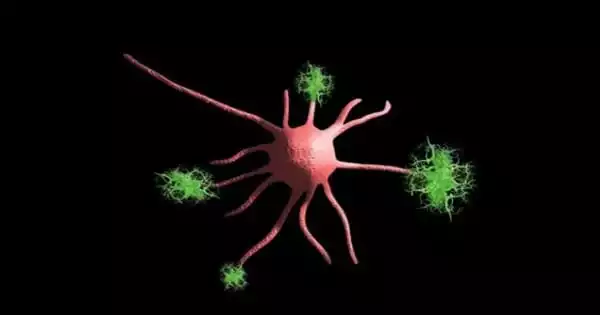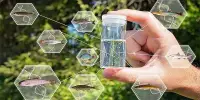An artificial organic neuron, or nerve cell, that can be integrated with a living plant and an artificial organic synapse has been developed by researchers. The neuron and synapse are both constructed from printed organic electrochemical transistors. Researchers have demonstrated for the first time an artificial organic neuron, or nerve cell, that can be integrated with a living plant and an artificial organic synapse. The neuron and synapse are both constructed from printed organic electrochemical transistors.
The electrical pulses from the artificial nerve cell can induce the plant’s leaves to close when connected to the carnivorous Venus flytrap, even if no-fly has entered the trap. Organic semiconductors can conduct both electrons and ions, aiding in the replication of plants’ ion-based mechanisms of pulse (action potential) generation. In this situation, a small electric pulse of less than 0.6 V can allow action potentials to be induced in the plant, causing the leaves to close.
“We chose the Venus flytrap to demonstrate clearly how we can steer the biological system with the artificial organic system and get them to communicate in the same language,” says Simone Fabiano, associate professor, and principal investigator in organic nanoelectronics at Linköping University’s Laboratory of Organic Electronics, Campus Norrköping.
For the first time, we’re exploiting the transistor’s capacity to flip based on ion concentration to adjust the spiking frequency. The spiking frequency sends a signal to the biological system, causing it to react. We’ve also demonstrated that the connection between the neuron and the synapse has a learning behavior known as Hebbian learning.
Padinhare Cholakkal Harikesh
In 2018, the Linköping University research group became the first to construct complementary and printable organic electrochemical circuits, using both n-type and p-type polymers to conduct negative and positive charges. This enabled the fabrication of printed complimentary organic electrochemical transistors. Following that, the researchers optimized the organic transistors such that they could be made in printing presses on thin plastic foil. On a single plastic substrate, thousands of transistors can be produced. The group employed printed transistors to simulate the neurons and synapses of the biological system in collaboration with researchers from Lund and Gothenburg. The findings were reported in the journal Nature Communications.
“For the first time, we’re exploiting the transistor’s capacity to flip based on ion concentration to adjust the spiking frequency,” explains Padinhare Cholakkal Harikesh, a post-doctoral researcher at the Laboratory of Organic Electronics. The spiking frequency sends a signal to the biological system, causing it to react.

“We’ve also demonstrated that the connection between the neuron and the synapse has a learning behavior known as Hebbian learning. The synapse stores information, making signaling more effective “says Simone Fabiano. The expectation is that artificial nerve cells will be used in sensitive human prostheses, implantable devices for neurological disease relief, and soft intelligent robotics.
“We’ve created ion-based neurons that are identical to our own and can be linked to biological systems. Organic semiconductors have various advantages, including the fact that they are biocompatible, biodegradable, soft, and formable. They simply require a low voltage to function and are fully safe for both plants and vertebrates” Chi-Yuan Yang, postdoctoral researcher at the Laboratory of Organic Electronics, explains.
Making artificial neurons that respond to electrical impulses from the nervous system has long been a medical objective. The difficulties were developing the circuits and determining the settings that allow the circuits to function like real neurons. “We were able to extract these properties for biological neurons and plug them into the synthetic circuits we created,” Prof Nogaret explained.
The researchers duplicated two types of neurons: cells from the hippocampus, a region of the brain important for memory, and brain cells involved in respiratory control. The research opens up a wide range of options for healing neuronal damage caused by degenerative disease, including medical implants to treat conditions such as heart failure and Alzheimer’s.
The research was funded in part by the Knut and Alice Wallenberg Foundation, the Swedish Research Council, the Swedish Foundation for Strategic Research, and the Swedish Government Strategic Research Area in Materials Science on Functional Materials at Linkoping University, among others.
















